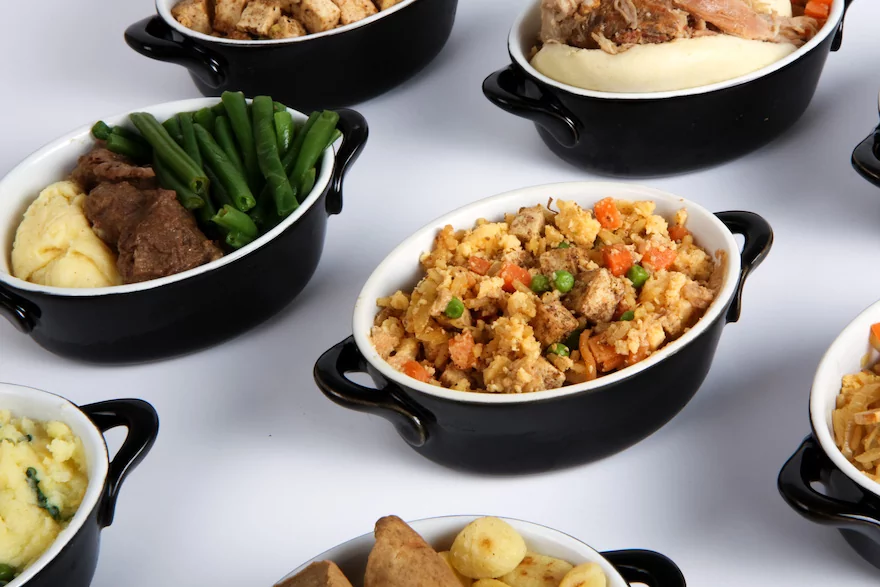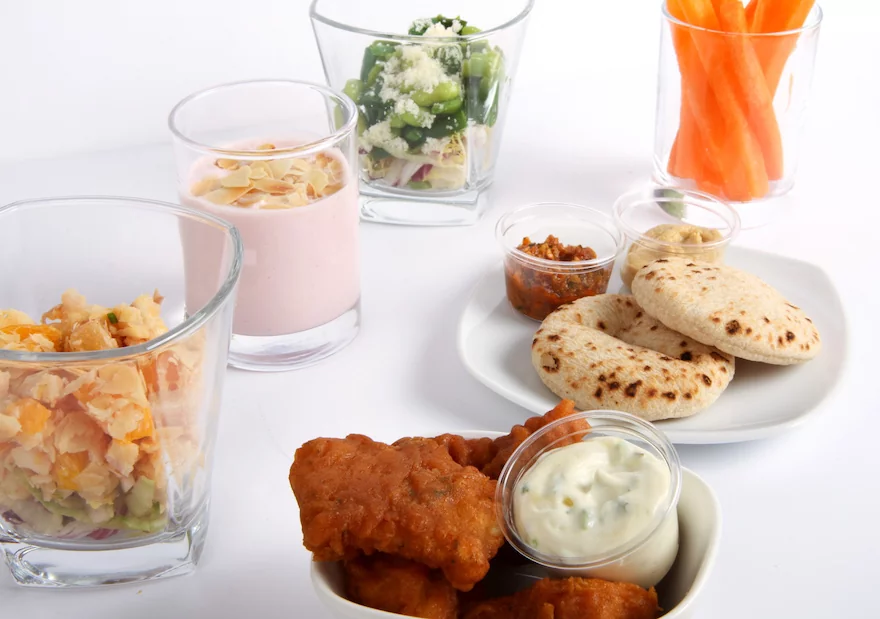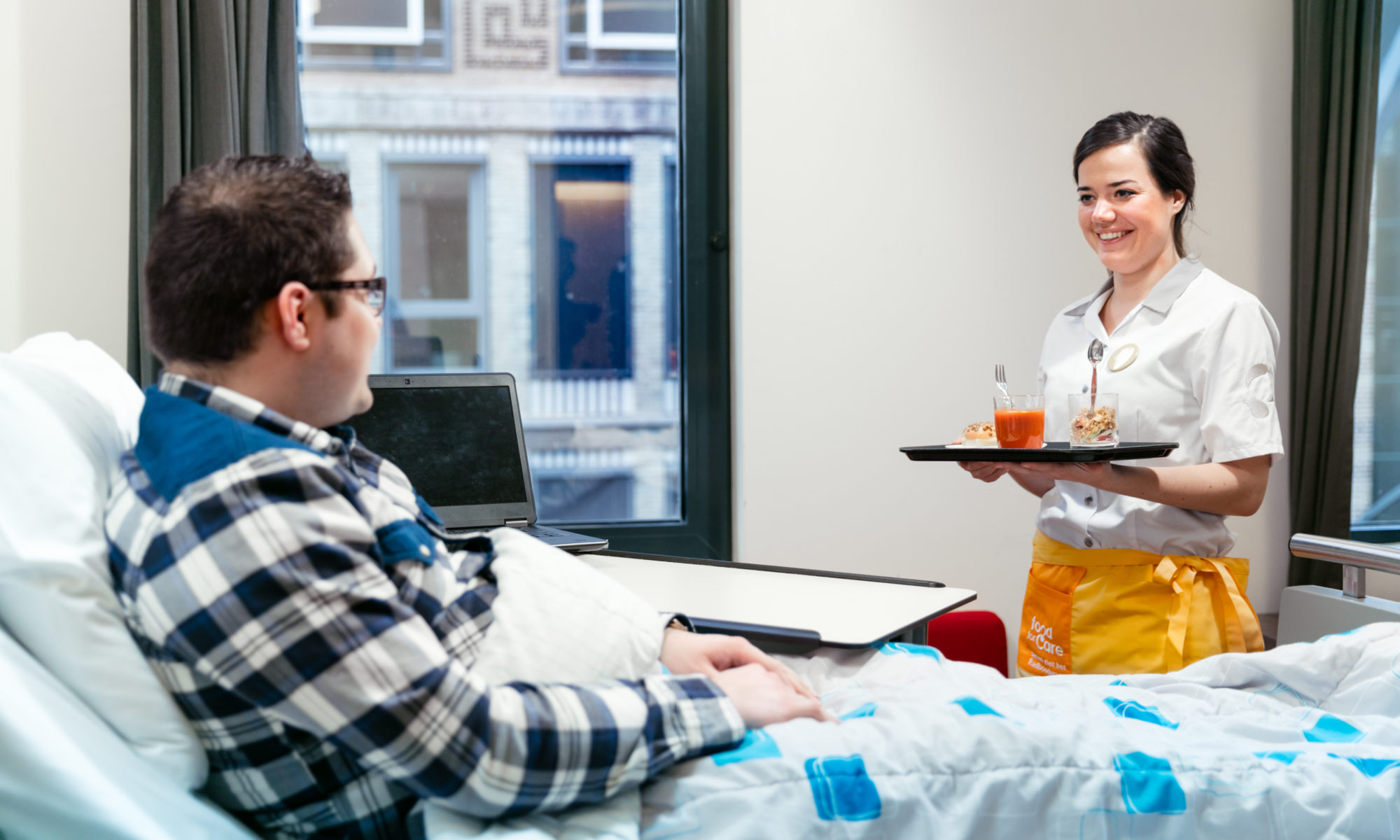Whenever we think of hospital food, chances are big that an image of a mushy, shapeless mass will come to mind first. Not very appetizing. But when fighting illness or during recovery, obtaining your daily intake of required nutrients is a must. That is why the department of oncology in the Radboud University Medical Center (UMC) in Nijmegen reached out to food designer Annelies Hermsen for help. Her assignment- to come up with a new food concept for the young adults in the oncology ward.
The assignment was formulated out of the urgency that when dealing with cancer, there are countless severe side-effects due to radiation and chemotherapy. One of them is change and reduction of appetite. Taste and smell can be distorted, and eating meals – especially in large quantities- becomes a problem. In order to still meet the daily requirements of calories and proteins, Annelies tinkered with the current food culture in the oncology department. As a result, she designed a food concept for a successful pilot that led to the on-going project Food For Care. This didn’t only change the quality of life of the patients, but also changed the entire way of food presentation in the hospital.

A few years before Annelies was given the assignment, an oncologist from Radboud UMC visited one of her lectures. With her name still fresh in their mind, Annelies was approached a few years later to design a new food concept. Previously she mainly collaborated with catering services or designed experimental diner experiences, so being approached by a large hospital to improve the quality of life of a group of patients seemed like an outstanding opportunity to explore the possibilities of food design.
Annelies conducted an extensive research which consisted of many conversations and interviews with patients, doctors and nutrition assistants. This created a clear image of what was taking place in the ward and what problems the patients were facing. “It was a nasty twist of faith that at that point my father was also fighting cancer. So I saw very closely what chemo and radiation do to you as a person, but also to your appetite specifically.” She found out that the problem was complex; there was a lot of diversity in the symptoms. Some of the patients didn’t tolerate certain food any more, or were very sensitive to specific smells.
The location of radiation also played a major role: radiation in the throat-area had a different effect to the patients with radiation in the area of the legs. “Radiation in the legs makes you unable to stomach citric foods, since they are very acidic and corrosive.” There also seemed to be difficulties with the size of the portions served three times a day. The patients weren’t interested in the traditional three large meals a day structure at all.
This personalized menu offered some kind of counter-narrative to the current one-size-fits-all food policy in hospitals.
Based on this, Annelies designed a food concept that revolved around the reduction of the portions that were originally served. To still ensure that the portions still contained the correct amount of calories and proteins, the numbers of meals were increased. Instead of three large meals a day, the concept consisted of seven small courses that were offered at different set times off the day. The food designer also made sure that every course offered a selection of dishes, so every patient was given the choice to pick something to their liking. The ability to choose was essential due to the large differences in perception of taste and smell. This personalized menu offered some kind of counter-narrative to the current one-size-fits-all food policy in hospitals. During the pilot, Annelies noticed that due to the small size of the portions, the patients were more likely to eat. “Beforehand some patients would already get sick by just the sight of the nutrition assistant walking in. That’s the severity of the response to the obligation of eating.”

Besides the adjustments to the quantities, Annelies also developed about 40 to 50 recipes, worked on changing the presentation of the dishes and the overall food experience. After all, the entire ritual surrounding the food was just as important as the dishes itself. Where the nutrition assistants first came to serve dinner in a doctor's coat and aluminum trolley in a clinical manner, they now wear a nice blouse with an apron.
The entire ritual surrounding the food was just as important as the dishes itself.
The gastronomic qualities of the assistants were also put to the test: “a chef can come up with a very pretty dish, but if the waiter just throws it on the table and doesn't say anything about it…well, then it would defeat the purpose. So their role was absolutely indispensable.” Given that food waste was a huge obstacle, due to the great diversity in dishes, it was of great importance during the development of the concept that the food assistants were able to properly direct which dishes would be served where.
Suddenly transformed into high-end waiters, they were responsible to offer and praise the seven 'courses' attractively. Annelies is certainly aware that the nutrition assistants were asked a lot. Her concept changed the entire culture of food in the department, thus also the role and profession of the nutrition assistants. Did they still work in healthcare, or was this part of the catering industry? This became a big subject of speculation, with even the collective labor agreement conditions of the assistants being carefully overlooked.

The pilot's scheme was a success. The patients were satisfied with the new way of serving dishes and the ability to pick their own meals. “Some patients told me: 'this is a party!' Well, I think that is quite a special compliment in this context.” But in addition to the positive replies by the patients, science also had a positive message. Scientific research showed that the participants of the pilot ultimately needed less medication. In particular, the usage of the anti-nausea medication decreased significantly. A great outcome for patients and doctors, but also for health insurers, according to Annelies. “In the end I think: personalized nutrition”. By carefully looking at the patients' clinical picture and their needs, a personalized diet that is beneficial to their recovery can be put together.
Scientific research showed that the participants of the pilot ultimately needed less medication.
Now, a few years after the successful conclusion of the pilot, the food concept has been rolled out further into a hospital-wide concept under the name Food For Care. The portfolio of recipes has grown considerably and now contains no less than a few thousand dishes. A different 'menu' has been composed for each department, with the focus on different food groups or nutritional values. Presentation also plays a major role here. Food For Care continues to practice this combination of gastronomy and personal preference, which offers a fresh perspective on the future of hospital catering and demonstrates the importance of personalized nutrition.
This interview was conducted as part of the research for the Embassy of Food 2021. Curators Annelies Hermsen and Chloé Rutzerveld selected seven projects and spoke with the makers designers about technology, food waste, health, education, protein transition, non-food and packaging. Collaborating with Next Nature Network, these interviews were edited and published. The Embassy of Food is made possible in part by the DOEN Foundation, Prince Bernhard Cultuur Fonds, Albert Heijn and the Dutch Design Foundation.

Share your thoughts and join the technology debate!
Be the first to comment